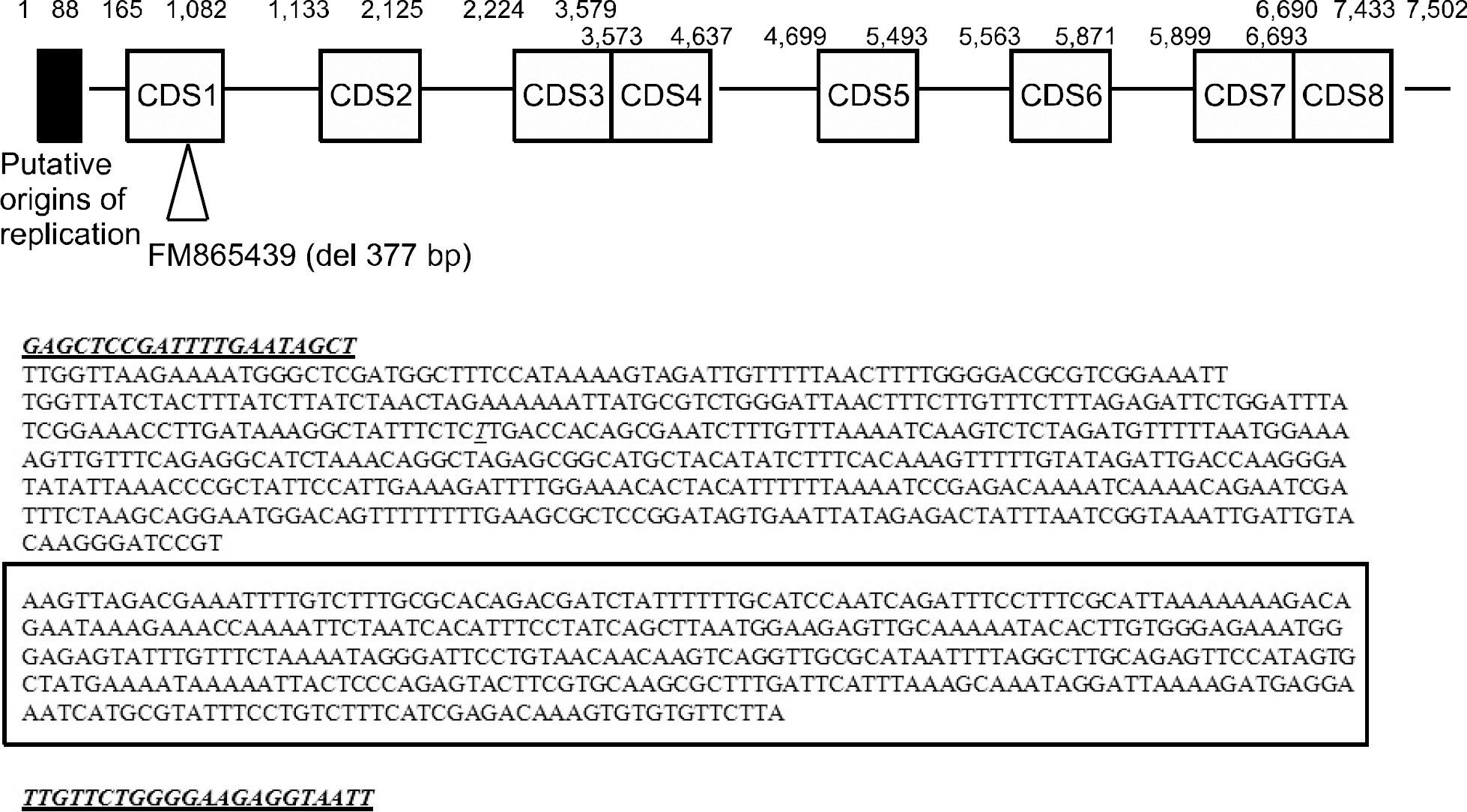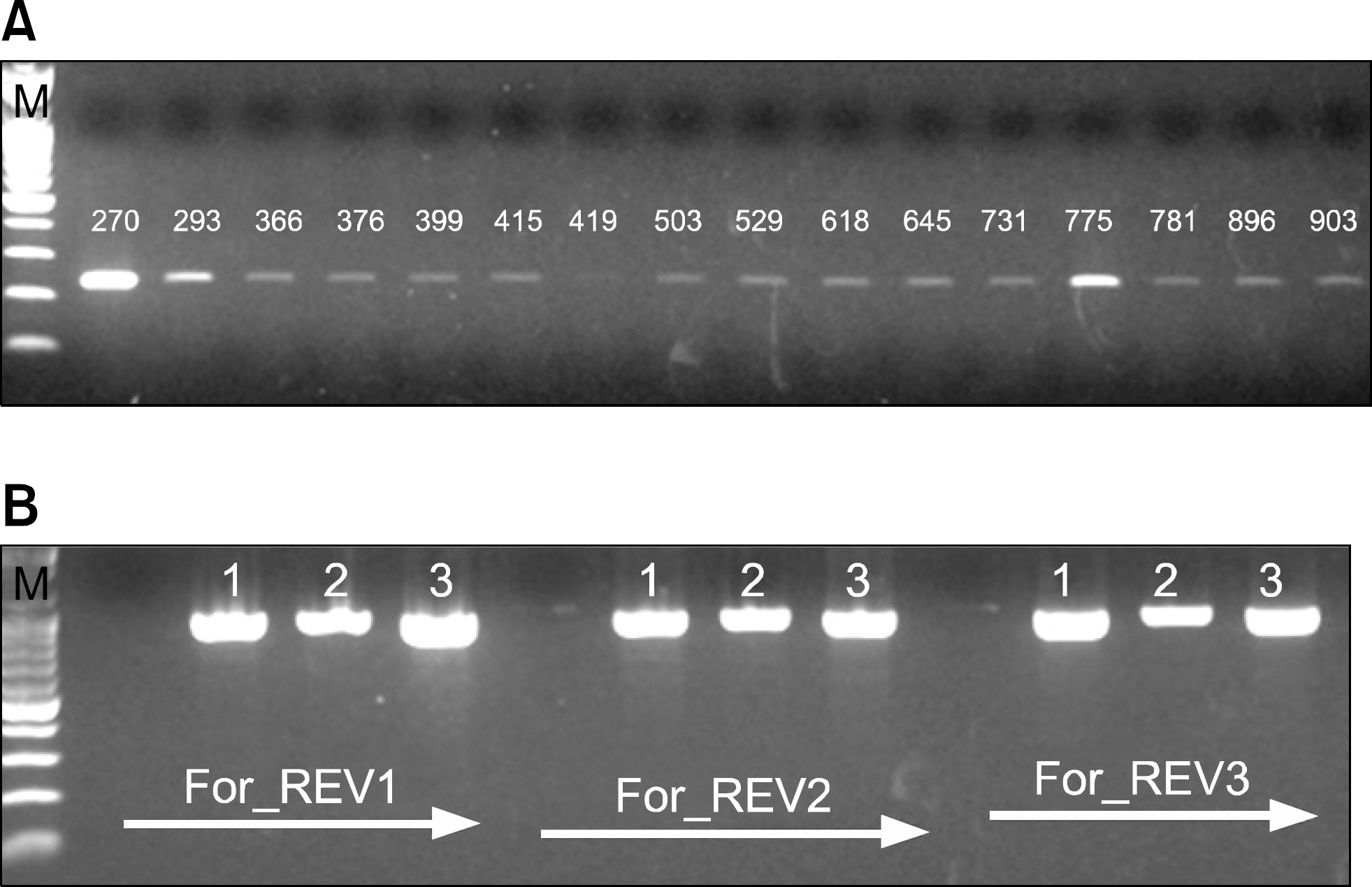Korean J Urogenit Tract Infect Inflamm.
2013 Oct;8(2):98-101. 10.14777/kjutii.2013.8.2.98.
Swedish Variant of Chlamydia trachomatis in Korea
- Affiliations
-
- 1Department of Laboratory Medicine, Dankook University Hospital, Cheonan, Korea.
- 2Department of Urology, Dankook University College of Medicine, Cheonan, Korea. multiorigins@yahoo.com
- KMID: 1502114
- DOI: http://doi.org/10.14777/kjutii.2013.8.2.98
Abstract
- PURPOSE
Today, many urologists use nucleic acid amplification tests (NAAT) in diagnosis of Chlamydia trachomatis infection in Korea. A new variant of C. trachomatis with a deletion in the cryptic plasmid, which cannot be detected using commercial tests targeting the deleted DNA sequences, has been found in Sweden. Therefore, the partial deletion of cryptic plasmid DNA means that the diagnostic standards cannot detect chlamydial infection any more in cases of new mutants. The mutant type has been prevalent in Sweden, however, its incidence was not high in other countries such as France, Holland, and Denmark. In or to study the existence of this mutant C. trachomatis in Korea, we developed new primer sets for detection of this mutation.
MATERIALS AND METHODS
We collected the first voided urine from male urethritis patient from April 2012 to August 2013 (Dankook University Hospital, Cheonan, Korea). We used the 25 confirmed C. trachomatis-positive specimens by using KL1 and KL2 primers for C. trachomatis and tested the existence of mutant chlamydial infection with the newly developed primer sets.
RESULTS
We could not detect any new variant in the samples.
CONCLUSIONS
Although this mutant C. trachomatis is not seen in Korea, we should watch for the occurrence of the type in the future. I would like to briefly report on implications of the surging mutant forms and how we might attain an understanding of this phenomenon.
Keyword
MeSH Terms
Figure
Reference
-
1. Groseclose SL, Zaidi AA, DeLisle SJ, Levine WC, St Louis ME. Estimated incidence and prevalence of genital Chlamydia trachomatis infections in the United States, 1996. Sex Transm Dis. 1999; 26:339–44.
Article2. Stamm WE. Chlamydia trachomatis infections of the adult. Holmes KK, Sparling PF, Mardh P, Lemon SM, Stamm WE, Piot P, editors. Sexually transmitted diseases. 3rd ed.New York: McGraw-Hill;1999. p. 407–22.3. Lee G, Sohng I. Cryptic plasmid amplification of Chlamydia trachomatis at a Korean Health Center for Female Commercial Sex Workers. Korean J Urol. 2006; 47:37–41.4. Unemo M, Olcén P, Agné-Stadling I, Feldt A, Jurstrand M, Herrmann B, et al. Experiences with the new genetic variant of Chlamydia trachomatis in Orebro county, Sweden - proportion, characteristics and effective diagnostic solution in an emergent situation. Euro Surveill. 2007; 12:E5–6.5. Jurstrand M, Christerson L, Klint M, Fredlund H, Unemo M, Herrmann B. Characterisation of Chlamydia trachomatis by ompA sequencing and multilocus sequence typing in a Swedish county before and after identification of the new variant. Sex Transm Infect. 2010; 86:56–60.
Article6. Reinton N, Moi H, Bjerner J, Moghaddam A. The Swedish Chlamydia mutant nvC trachomatis in Norway. Tidsskr Nor Laegeforen. 2010; 130:380–1.7. Hoffmann S, Jensen JS. Mutant Chlamydia trachomatis in Denmark. Euro Surveill. 2007; 12:E7–8.
Article8. de Barbeyrac B, Raherison S, Cado S, Normandin F, Clerc M, Clairet V, et al. French situation concerning the Swedish Chlamydia trachomatis variant. Euro Surveill. 2007; 12:E11–2.
Article9. Morré SA, Catsburg A, de Boer M, Spaargaren J, de Vries HJ, Schirm J, et al. Monitoring the potential introduction of the Swedish Chlamydia trachomatis variant (swCT) in the Netherlands. Euro Surveill. 2007; 12:E9–10.
Article10. National guideline for the management of Chlamydia trachomatis genital tract infection. Clinical Effectiveness Group (Association of Genitourinary Medicine and the Medical Society for the Study of Venereal Diseases). Sex Transm Infect. 1999; 75(Suppl 1):S4–8.11. Pasternack R, Vuorinen P, Pitkäjärvi T, Koskela M, Miettinen A. Comparison of manual Amplicor PCR, Cobas Amplicor PCR, and LCx assays for detection of Chlamydia trachomatis infection in women by using urine specimens. J Clin Microbiol. 1997; 35:402–5.
Article12. Davis JD, Riley PK, Peters CW, Rand KH. A comparison of ligase chain reaction to polymerase chain reaction in the detection of Chlamydia trachomatis endocervical infections. Infect Dis Obstet Gynecol. 1998; 6:57–60.13. Lee G, Park J, Kim B, Kim SA, Yoo CK, Seong WK. OmpA genotyping of Chlamydia trachomatis from Korean female sex workers. J Infect. 2006; 52:451–4.
Article14. Byun Y, Park HY, Kim H, Lee G. Differences in Chlamydia trachomatis cryptic plasmid loads in two types of female commercial sex workers in Korea. Jpn J Infect Dis. 2008; 61:146–7.15. Magbanua JP, Goh BT, Michel CE, Aguirre-Andreasen A, Alexander S, Ushiro-Lumb I, et al. Chlamydia trachomatis variant not detected by plasmid based nucleic acid amplification tests: molecular characterisation and failure of single dose azithromycin. Sex Transm Infect. 2007; 83:339–43.
Article
- Full Text Links
- Actions
-
Cited
- CITED
-
- Close
- Share
- Similar articles
-
- A serologic study on the IgM. IgA and IgG antibody positive rates against chlamydia trachomatis
- Immunotyping of chlamydia trachomatis by monoclonal antibodies
- Isolation of Chlamydia Trachomatis in Non-gonococcal Urethritis and Chronic Prostatitis and the Result of Treatment with Antibiotics
- Clinical study for the chlamydia trachomatis infection in the cervix
- The Value of Ureaplasma Urealyticum and Chlamydia Trachomatis in Female Urethral Syndrome



